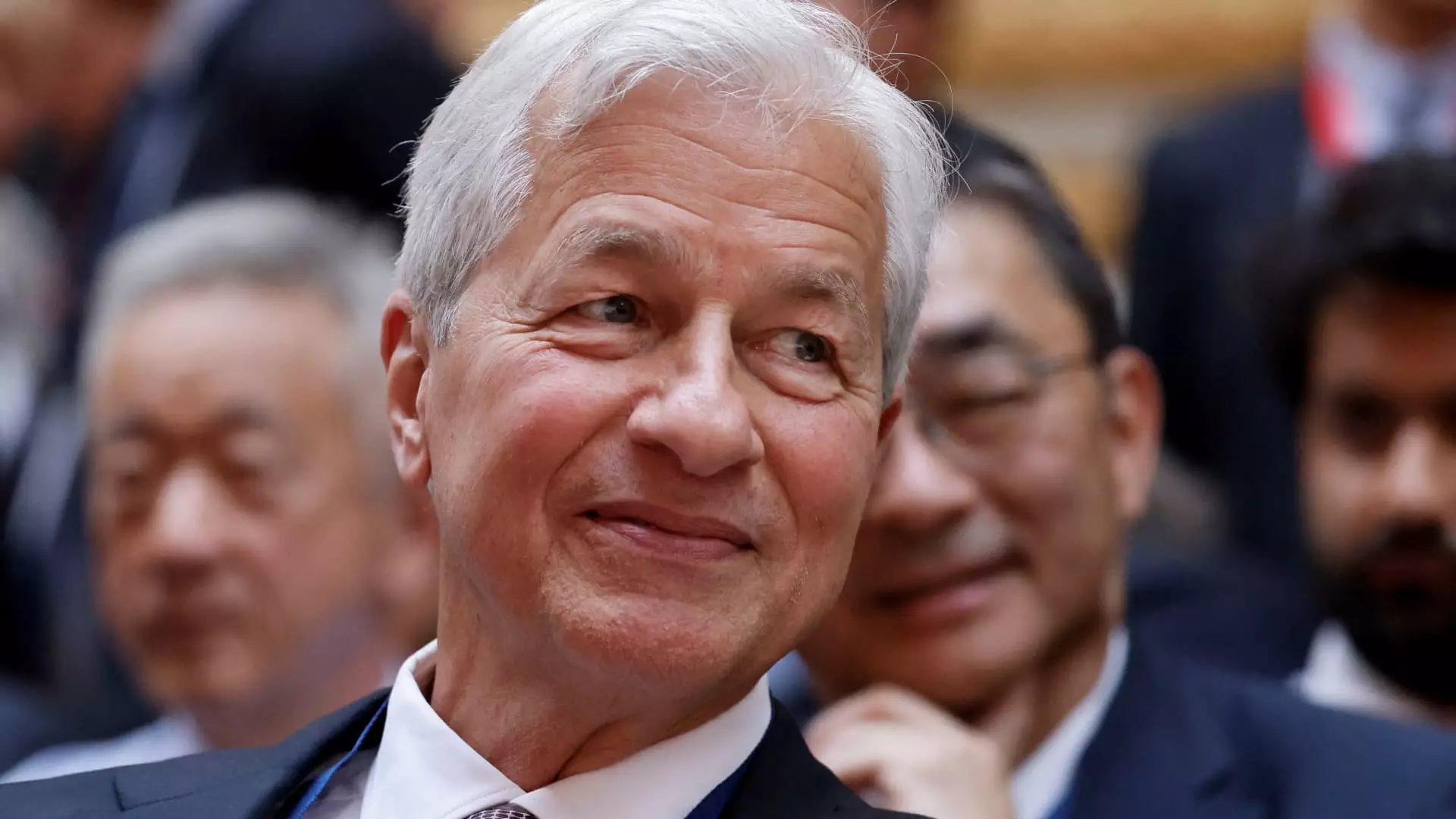In the world of banking and finance, excess capital has become somewhat of a double-edged sword for institutions managing substantial assets. JPMorgan Chase, the premier banking institution in the United States, currently finds itself handling approximately $35 billion in excess capital—funds not necessary for regulatory requirements or operational needs. This scenario, which Chief Financial Officer Jeremy Barnum termed a “high-class problem,” necessitates a recalibration of the bank’s capital allocation strategy. As JPMorgan contemplates its approach, it wrestles with both investor pressure and a fluctuating economic landscape that warrants caution.
After a successful fiscal year marked by record profits and revenues, JPMorgan Chase is under heightened scrutiny from investors and analysts alike, eager to understand how the bank plans to deploy its substantial cash reserves. The bank’s stock has surged, reflecting investor confidence, yet there remains a palpable tension regarding the use of surplus funds. Wall Street enthusiastically anticipates strategic repurchases of shares, particularly as JPMorgan seeks to return value to shareholders. Yet, with stock prices consistently approaching record highs, the bank finds itself at a crossroads, needing to balance the interests of investors with prudent financial management.
During a recent discussion, CEO Jamie Dimon expressed reservations about buying back too much stock when valuations appear elevated. He highlighted that repurchasing shares at inflated prices—defined as trading over two times the tangible book value—would not align with the company’s long-term interests. This statement illustrates a fundamental principle in financial strategy: prudence over impulsiveness. Dimon’s caution indicates a strong commitment to maintaining capital discipline, prioritizing a sustainable growth trajectory over immediate shareholder gratification.
While the current economic environment has remained resilient, JPMorgan’s leadership has consistently projected caution, warning of potential recessions and economic fluctuations. Barnum acknowledged the dynamic between high asset prices and looming economic risks, emphasizing the necessity for foresight and flexibility. Such a stance indicates the bank’s strategic preparation for various potential scenarios, underscoring the importance of not allowing excess capital to become a liability rather than an asset.
With economic indicators suggesting a range of outcomes, transitioning into a potentially volatile market might present JPMorgan with opportunities to enhance its competitive positioning. By remaining disciplined in capital allocation, the bank positions itself to seize market share during turbulent times, when competitors may falter under economic pressure. Analysts, such as Charles Peabody from Portales Partners, affirm that capital prudency will facilitate captures of market opportunities in the wake of a downturn.
As JPMorgan weighs its options, the focal point of its strategy remains clear: to return substantial capital to shareholders without compromising its financial health or future opportunities. The pathway to navigate such capital deployment in the context of a possible recession involves a careful consideration of risk versus return, with an eye toward potential investments that can yield sustainable growth.
The bank’s current strategy of share buybacks may indeed evolve, reflecting market conditions and economic realities. A disciplined approach will mean keeping a robust buffer that allows the organization to respond effectively to emerging risks, showcasing an agile response to a shifting landscape. It is here that JPMorgan’s philosophy on capital management shines—prioritizing resilience over recklessness.
As JPMorgan Chase maneuvers through the complexities of excess cash management, it is evident that the bank remains committed to a principled approach to capital allocation. Balancing shareholder demands with long-term financial health sets a commendable precedent in the banking industry, demonstrating that maintaining strategic prudence can indeed coexist with responsible growth aspirations. Through an evolving dialogue around its capital position, JPMorgan continues to embody a model of sustainable financial stewardship amidst fluctuating economic tides.

